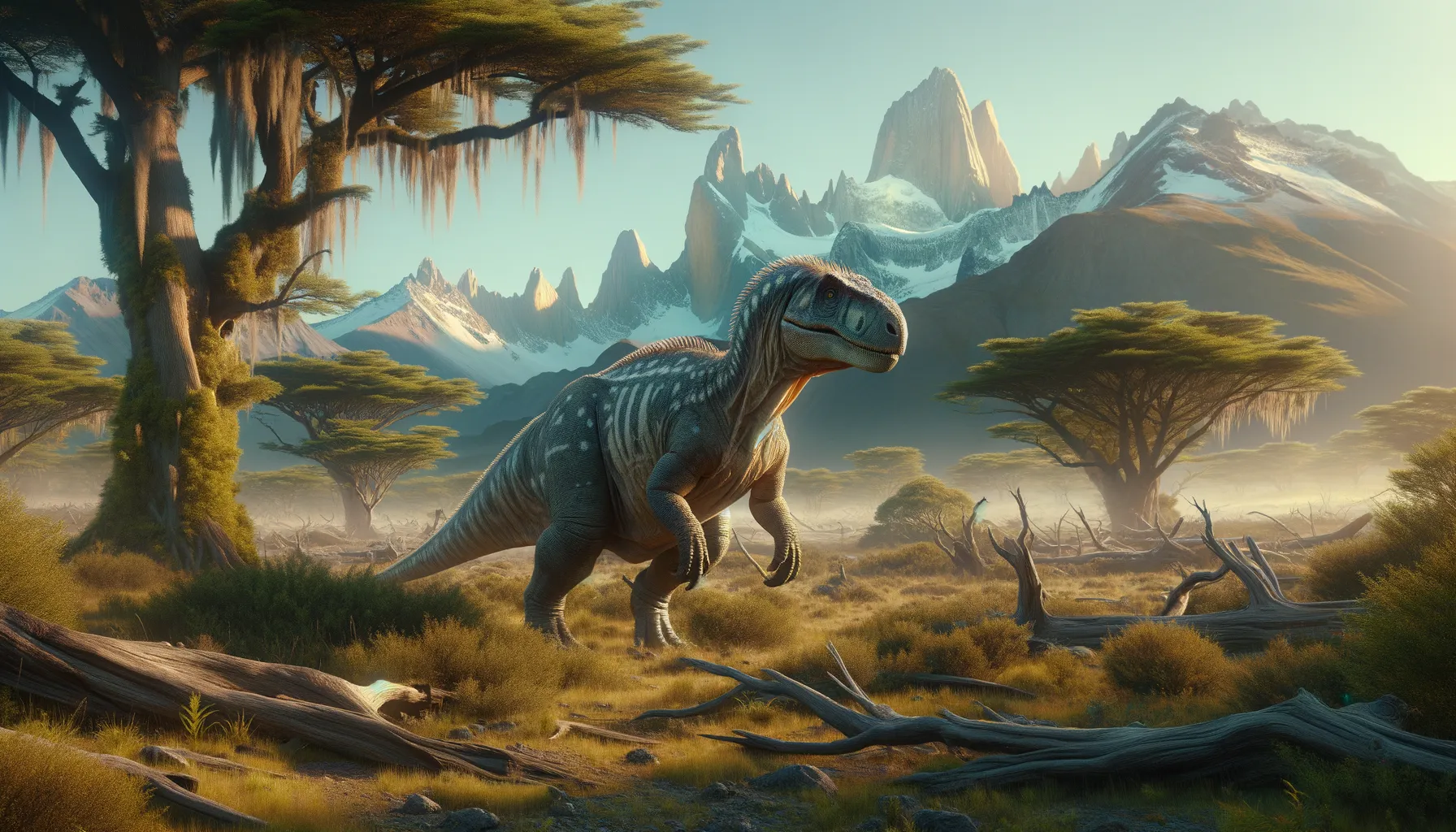
Loncosaurus
Speedy survivor of the prehistoric landscape!
Period
Cretaceous
Length
Likely around 6 meters in length.
Height
Approximately 1.5 meters tall at the shoulder.
Weight
Estimated to weigh around 200 kilograms.
Loncosaurus was a dinosaur species that roamed the Earth during the late Cretaceous period. Known for its potential speed and moderate size, it captured the interest of paleontologists with its intriguing features. The first fossils were uncovered in Argentina, adding a vital piece to the South American dinosaur puzzle. While specific details about its behavior and lifestyle remain sparse, Loncosaurus offers a glimpse into the diverse ecosystem of the Cretaceous era.
Diet
As a herbivore, Loncosaurus primarily fed on plants and foliage available in its environment. Its diet likely consisted of ferns, leaves, and other low-lying vegetation it could easily access.
Hunting
Being a herbivore, Loncosaurus did not hunt other animals. Instead, it foraged for plants and used its mobility to evade predators.
Environmental challenges
Loncosaurus faced environmental challenges typical of the late Cretaceous, including seasonal changes in vegetation. Competition for food with other herbivorous dinosaurs would have been a constant challenge. Predatory threats from larger carnivores also posed significant risks to its survival. Strategies such as swift movement or possible herding behavior might have been employed to mitigate these risks.
Speed
Estimated to be moderately fast for its size.
Lifespan
Possibly around 20 to 30 years.
First discovery
Discovered in Argentina in the late 19th century.
Fun Facts
- Loncosaurus was a small bipedal dinosaur, meaning it walked on two legs.
- It lived during the Late Cretaceous period, over 70 million years ago.
- The name Loncosaurus means 'spear lizard', given for its sharp features.
- Remains of Loncosaurus have been found in South America, specifically in Argentina.
- Despite being small, with estimates suggesting it was about the size of a rabbit, Loncosaurus was likely a fast runner.
- Loncosaurus is known from fragmentary fossils, making its exact appearance a bit of a mystery.
- This dinosaur was originally thought to be a type of ground-dwelling reptile before being classified as a dinosaur.
Growth and Development
The growth of Loncosaurus is believed to have been relatively slow, allowing it to develop strong bones and muscles for its environment. Juveniles likely stayed with their group for protection. As they matured, they might have gained independence, potentially participating in reproductive activities.
Habitat
Loncosaurus lived in what is now modern-day Argentina, which during the Cretaceous, was a rich tapestry of plains and forests. Its habitat supported a wide range of plant life that provided ample food. The environment also included rivers and floodplains, which contributed to its lush, verdant surroundings.
Interaction with other species
In its environment, Loncosaurus would have encountered numerous other dinosaur species, both herbivorous and carnivorous. While it likely coexisted peacefully with other plant-eaters, interactions with predators would have been more cautious. The presence of predators could lead to group defensive behaviors among Loncosaurus individuals.
Natural lifespan
The natural lifespan of Loncosaurus is estimated to be around 20 to 30 years.
Reproduction
Loncosaurus likely reproduced by laying eggs, as evidenced by fossilized nests found of similar species. The eggs would have been laid in small clutches and possibly incubated by the heat of the sun. Parental care levels are unknown but could have included guarding the nest from predators.
Social behaviour
Loncosaurus may have exhibited some degree of social behavior, gathering in small groups for enhanced protection against predators. Such social structures could provide added safety and improve foraging efficiency.
Fossil locations
Fossils of Loncosaurus have been primarily located in Patagonia, Argentina. These finds are vital to understanding the diversity of the Cretaceous period in South America. Further potential sites include other regions within Argentina, although exact locations of additional finds remain speculative.
